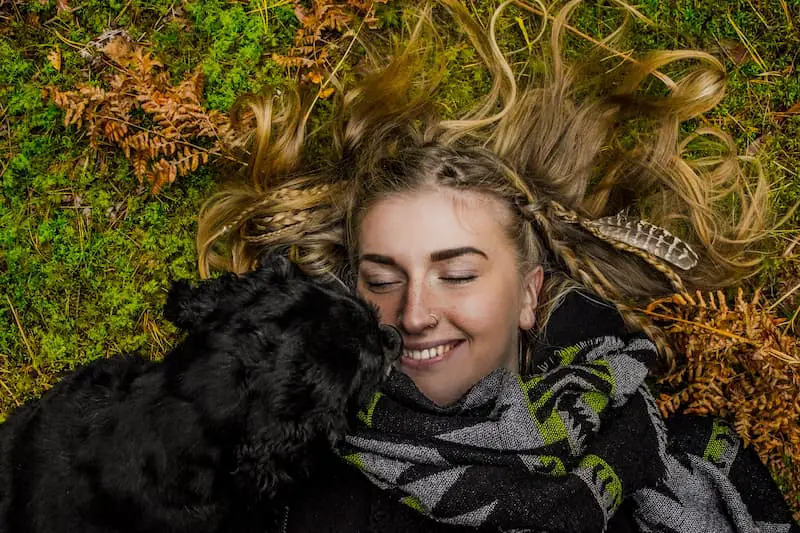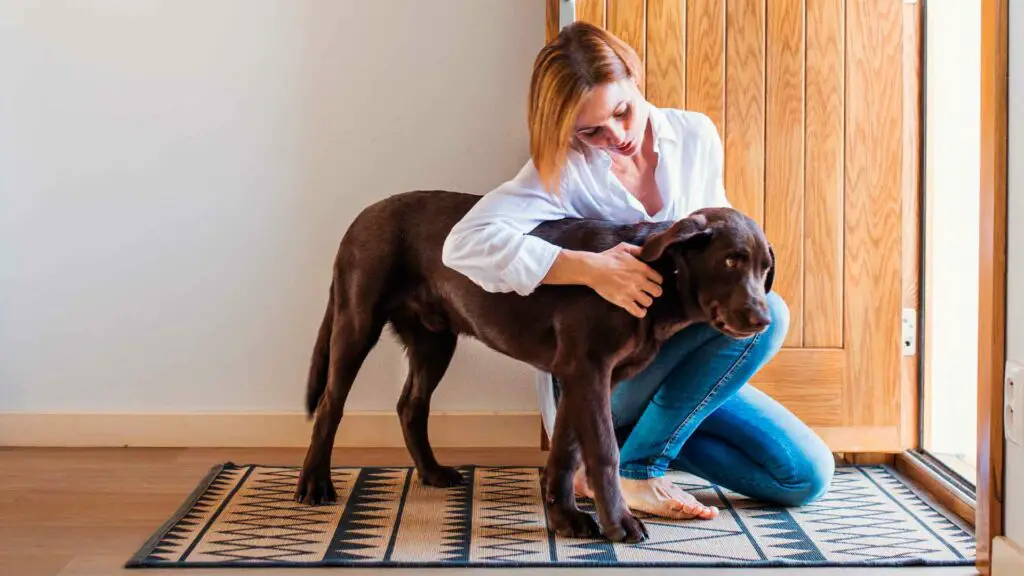Attention
Dogs will always want attention, but some dog’s need for attention can become too much. In puppies, the need for attention is normal; they depend on their mother. However, when dogs grow older, their need for attention can be a little annoying.
Climbing on top of you can be a signal for attention, but so can:
- Poking you
- Licking you
- Pawing
- Nipping
- Stealing
- Excessive barking
- Restless behavior
Often owners find these behaviors frustrating if they happen frequently. It can be hard to ignore loud barking or climbing on top of you, but if you keep answering these actions, it can reinforce them.
Dogs are social animals who need daily interaction; it can be easy to accidentally reinforce these attention-grabbing behaviors. Attention-seeking behavior can also stem from boredom. When docks lack exercise, confidence, or mental stimulation, they may act out in these ways.
Affection
Similarly to laying on top of you for comfort, your dog may be showing their affection. This is particularly common if you’re gone throughout the day, and they don’t see you as often. Laying on you is them asking for some quality time with you.
Wanting to be close to you shows their love; letting them sit on top of you strengthens your relationship. This also has health benefits for dogs. Studies have shown that oxytocin, the hormone that enables us to feel happy, is released through touch, warmth, and stroking. This gives further anti-stress effects for both humans and dogs!
Separation Anxiety
Do you miss your dog while you’re apart? Leaving your pup at home isn’t nice; it’s also difficult for your dog. Separation anxiety is when dogs feel distressed when their owner is absent. Dogs sometimes find it hard to cope when their owner is not around.
If your dog has separation anxiety, it will be at its worst when you aren’t around. When you return, they may appear over-excited and affectionate when you return. Laying on top of you a little too much can be a symptom of this excitement.
Communication
Dogs communicate their wants and needs in various ways; since we can’t speak to them, we need to be on top of decoding these signals. Laying on top of you may be their way of telling you something, not just a need to be close to you. Some dogs may use this action to ask for treats, go for a walk, or play with you.









